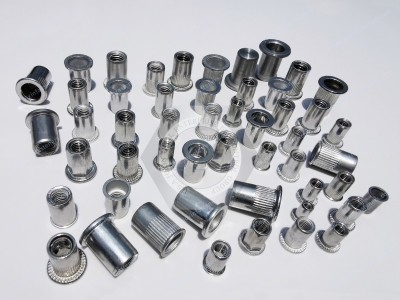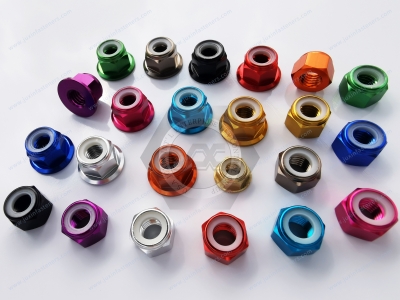Call Us
+86 136 6007 9809
Call Us
+86 136 6007 9809
Jan. 13, 2024
Riveting process solution for aluminum alloy body of rail transit vehicles
With the development of cities and the increase in population, rail transportation has become a meaningful means of urban travel. As an essential part of urban rail transportation, the manufacturing process and material selection of rail vehicles play a vital role in the performance and safety of the cars. Aluminum alloy body is an essential material for rail transit vehicles; its riveting process is crucial for the stability and reliability of the body. The riveting process of aluminum alloy bodies for rail transit vehicles is discussed and introduced.
Aluminum alloy body in the application of rail transit vehicles:Aluminum alloy is generally selected as the body material of rail transit vehicles because it has the advantages of being lightweight, high strength, and corrosion resistance, which can meet the performance requirements of rail transit vehicles. Compared with traditional steel, an aluminum alloy body can reduce the car's overall weight, reduce transportation work, and improve the performance and energy-saving effect of the vehicle. The styling design of the aluminum alloy body is also more flexible and changeable, which can meet the customization requirements of different urban environments and customer needs.
The importance of the riveting process in aluminum alloy car body:The riveting process connects aluminum alloy plates by riveting to form the load-bearing structure of the car body. Riveting is a commonly used vehicle body connection process with the characteristics of a solid connection, long life, corrosion resistance, shock resistance, etc. In subway vehicles, widely used in stainless steel blind rivet nuts, stainless steel rivets, stainless steel screws and nuts, and stainless steel pressure rivet nuts, the riveting process for the stability and reliability of the car body is crucial, directly related to the safety and operation of the vehicle.
Stainless Steel Low-Profile Rivet Nuts: Our most corrosion-resistant low-profile rivet nuts stand up to chemicals. They're often used for light-duty fastening in low-clearance applications. When installed, the threaded portion is drawn into the sleeve, creating pressure against the hole to secure the nut. The tin-plating provides lubricity, allowing the nut to collapse smoothly. The drill bit size in the table is for material with a 0.030"-0.090" thickness. These rivet nuts can be installed in thicker material but may require larger holes. Install them using a hand- or power-driven rivet nut tool. Length is measured from under the flange. Installed length is the maximum length of the barrel when installed.
Thread-Sealing Closed-End Rivet Nuts: The thread area is enclosed, which prevents leakage past the threads from either side of your application. These rivet nuts have a ribbed body to hold them in place when tightening a screw. The body and flange are zinc yellow-chromate plated steel for corrosion resistance. Install in a drilled hole using a rivet nut tool. The tool collapses the nut, creating a backside flange that holds the nut to the material. Length is measured from under the flange. Installed length is the maximum length of the barrel when installed.
Aluminum Low-Profile Rivet Nuts: These low-profile rivet nuts are one-third the weight of steel rivet nuts. They have a low profile for light-duty fastening in low-clearance applications. A cadmium or tin-zinc plating provides corrosion resistance and adds lubricity so they collapse smoothly. When installed, the threaded portion is drawn into the sleeve, creating pressure against the hole to secure the nut. The drill bit size in the table is for material with a 0.030"-0.090" thickness. These rivet nuts may be installed in thicker material but require larger holes. Install them using a hand- or power-driven rivet nut tool. Length is measured from under the flange. Installed length is the maximum length of the barrel when installed.
Zinc-Plated Steel Domed Head Blind Rivets: The zinc-plated finish provides mild corrosion resistance. These rivets join material when only one side is accessible. The low-profile domed head creates a finished appearance.
The combined thickness of the material must fall within the rivet's material thickness range. Shear strength is the force it takes to break a rivet from the side, and tensile strength is the pull a rivet can withstand without breaking. Joint strength is also affected by rivet spacing and hole size.
Installation requires a blind rivet tool (sold separately) with a nosepiece that matches the rivet's diameter.
Copper Domed Head Blind Rivets: Copper rivets are electrically conductive, nonmagnetic, and have good corrosion resistance. They join material when you only have access to one side. The low-profile domed head creates a finished appearance.
The combined thickness of the material must fall within the rivet's material thickness range. Shear strength is the force it takes to break a rivet from the side, and tensile strength is the pull a rivet can withstand without breaking. Joint strength is also affected by rivet spacing and hole size.
Installation requires a blind rivet tool (sold separately) with a nosepiece that matches the rivet's diameter.
18-8 Stainless Steel Large-Diameter Domed Head Blind Rivets: 18-8 stainless steel has good corrosion resistance and may be mildly magnetic. These rivets have a 50% larger head diameter than standard domed head blind rivets, distributing pressure where the head meets the material surface—covering irregular holes and extra holding power when fastening soft, thin materials to a rigid backing. They join material when you only have access to one side. The low-profile domed head creates a finished appearance.
The combined thickness of the material must fall within the rivet's material thickness range. Shear strength is the force it takes to break a rivet from the side, and tensile strength is the pull a rivet can withstand without breaking. Joint strength is also affected by rivet spacing and hole size.
Installation requires a blind rivet tool (sold separately) with a nosepiece that matches the rivet's diameter.


Steps of the riveting process:
1. Drilling: first, the aluminum alloy plate is drilled to form a connection hole.
2. Drilling and shaping: Shape the drilled holes to smooth the edges of the connection holes, which is conducive to the tight riveting process of the connection.
3. Riveting: the aluminum alloy plates to be connected are placed together, the rivets are inserted into the connection holes through the riveting gun, and the rivets are tightly coupled with the plates through the pressure and impact of the riveting gun.
4. Rivet molding: Finally, the riveted parts are molded to ensure the flatness and tightness of the riveted parts.
Zinc-Plated Steel Large-Diameter Domed Head Blind Rivets: The zinc-plated finish provides mild corrosion resistance. These rivets have a 50% larger head diameter than standard domed head blind rivets, distributing pressure where the head meets the material surface—covering irregular holes and extra holding power when fastening soft, thin materials to a rigid backing. They join material when you only have access to one side. The low-profile domed head creates a finished appearance.
The combined thickness of the material must fall within the rivet's material thickness range. Shear strength is the force it takes to break a rivet from the side, and tensile strength is the pull a rivet can withstand without breaking. Joint strength is also affected by rivet spacing and hole size.
Installation requires a blind rivet tool (sold separately) with a nosepiece that matches the rivet's diameter.
Wide-Thickness-Range Large-Diameter Domed Head Blind Rivets: These grip a much more comprehensive range of material thicknesses than standard blind rivets. They have a 50% larger head diameter that distributes pressure where the head meets the material surface. They cover irregular holes and provide extra holding power when fastening soft, thin materials to a rigid backing. Made of aluminum, rivets are lightweight, nonmagnetic, and have good corrosion resistance. They join material when you only have access to one side. The low-profile domed head creates a finished appearance.
The combined thickness of the material must fall within the rivet's material thickness range. Shear strength is the force it takes to break a rivet from the side, and tensile strength is the pull a rivet can withstand without breaking. Joint strength is also affected by rivet spacing and hole size.
Installation requires a blind rivet tool (sold separately) with a nosepiece that matches the rivet's diameter.
Critical issues in the riveting process:
1. Material selection: The selection of aluminum alloy sheets is essential in the riveting process. An aluminum alloy sheet with good strength and toughness is necessary to ensure a solid and stable connection after riveting.
2. Riveting point layout: the layout of the riveting point needs to be reasonable and can not be too dense or too sparse to ensure the uniformity and firmness of the connection.
3. Drilling and shaping: the drilling and shaping process must be strictly controlled to ensure that the shape and size of the connection holes meet the requirements.
4. Riveting quality inspection: riveting needs to be carried out after the quality inspection to check the firmness and sealing of the connection parts.
The development trend of the riveting process:With technology's continuous development and progress, the riveting process is also improving and innovating. The future riveting process will pay more attention to automation and intelligence, reduce manual intervention, and improve production efficiency and stability. It will also pay more attention to environmental protection and energy saving, using more environmentally friendly riveting materials and processes and reducing material waste and pollution.
The riveting process of the aluminum alloy body of the subway vehicle is crucial to its performance and safety. The reasonable application and continuous improvement of the riveting process can improve the stability and reliability of the car and ensure the safe and stable operation of urban rail transit. It is believed that with the continuous development and improvement of technology, the aluminum alloy body riveting process will usher in better industrial development prospects in the future.
Please contact me if you are looking for high-quality, Metric Aluminum Hex Nuts fasteners or technical support for structural design. Thanks.Email:adelajonly@gmail.com
Website: https://www.juxinfasteners.com
Contact Us
Tel.:
+86 020 8621 0320
+86 020 3121 6067
Technical Support:
Navigation
SEND INQUIREY